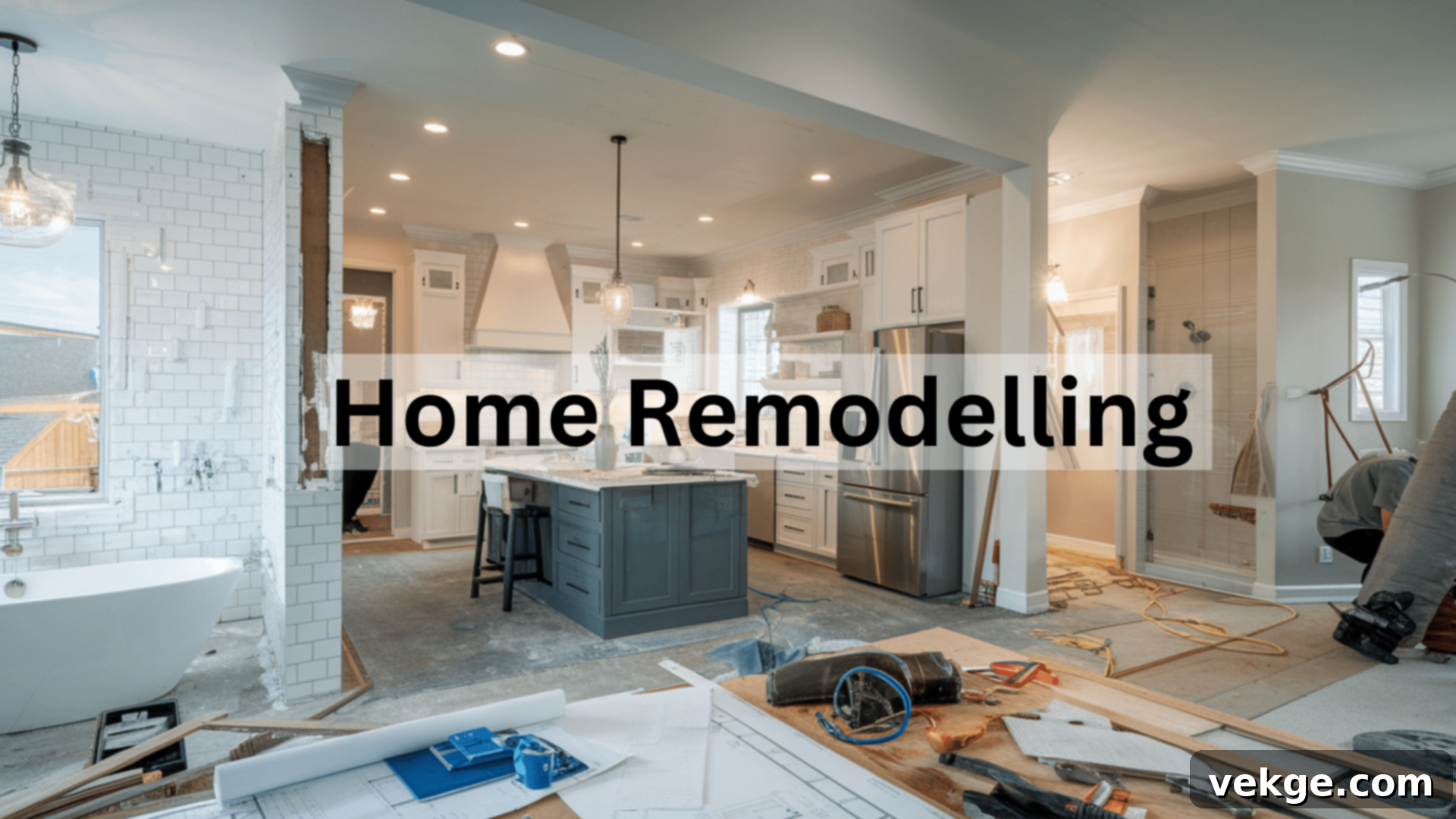Your Essential Guide to Home Remodeling: Planning, Design & Execution for a Successful Renovation
Embarking on a home remodeling project is an exciting journey, offering the chance to transform your living space into something truly reflective of your style and needs. However, this journey also comes with its unique set of challenges. Whether you’re dreaming of a modern kitchen, a spa-like bathroom retreat, or a complete overhaul of your entire home, meticulous planning is the cornerstone of a successful renovation.
This comprehensive guide is designed to walk you through every critical step of preparing for your home remodel. From establishing a realistic budget and selecting the right contractor to navigating necessary permits and exploring innovative design ideas, we cover it all. By following these practical tips and implementing a clear plan, you can confidently navigate the complexities of renovation, avoid common pitfalls, and ensure a smoother, more enjoyable process.
From understanding the foundational needs of your home to applying the exquisite final touches on your newly remodeled space, we are here to support you at every stage. Let’s begin the transformation, making your home a perfect fit for your lifestyle and aspirations.
Understanding the Basics of Home Remodeling
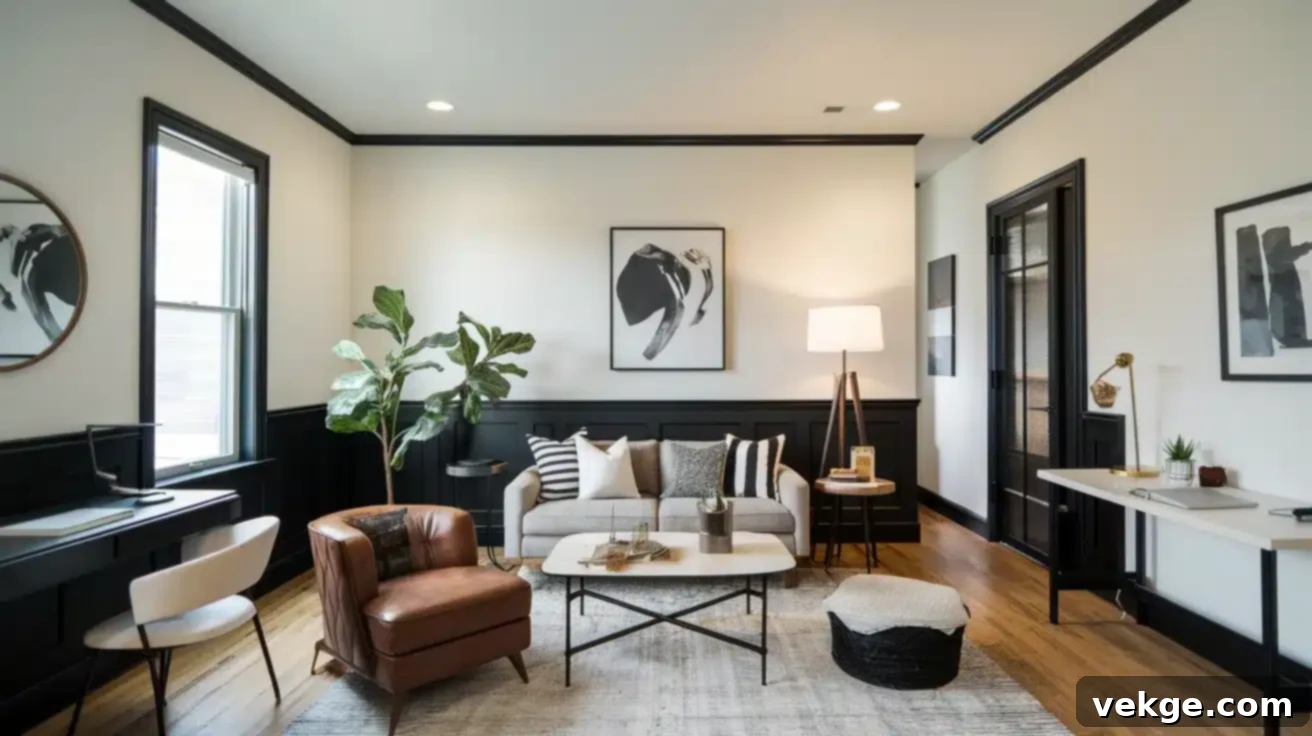
Home remodeling is more than just a cosmetic upgrade; it’s an investment in your property that can significantly enhance its functionality, aesthetic appeal, and overall market value. Regardless of the project’s scale, from minor updates to extensive structural changes, the process demands thorough preparation and a clear vision. Without proper planning, even seemingly straightforward renovations can lead to unforeseen expenses, frustrating delays, and less-than-satisfactory outcomes.
Remodeling projects vary significantly in scope and complexity. You might be considering a simple paint refresh and new fixtures, or perhaps a complete reconfiguration of your floor plan, including moving walls and updating major systems like plumbing and electrical. Each type of project requires a specific approach to planning and execution. The key to success lies in understanding the “why” behind your renovation.
When you approach a remodeling project, the first step is to clarify your objectives. Ask yourself what aspects of your current space are no longer serving you effectively. Are you aiming for improved functionality, an updated aesthetic, increased living space, better energy efficiency, or a combination of these? Having well-defined goals will serve as your compass, guiding all subsequent decisions, from design choices to material selection and contractor engagement.
Equally crucial is a thorough assessment of your home’s current condition. Look beyond superficial concerns and investigate underlying structural elements, electrical wiring, plumbing systems, and insulation. Many homeowners discover hidden issues like outdated wiring, leaky pipes, or inadequate insulation during renovations. Addressing these foundational problems early on is vital, often preceding any cosmetic improvements, to ensure the long-term integrity and safety of your home.
Key Factors to Consider Before Starting a Home Remodel
Planning a successful home remodel requires careful consideration and preparation across several critical areas. Addressing these important factors upfront will help ensure your project runs smoothly, stays on track, and achieves your desired results.
- Detailed Budget Planning: Create a comprehensive budget that meticulously itemizes all anticipated costs, including materials, labor, design fees, permit expenses, and contractor markups. It is crucial to allocate an additional 15-20% of your total budget as a contingency fund for unexpected issues or changes that may arise during the renovation process.
- Realistic Time Management: Establish a practical timeline for your project, understanding that different renovations have varying durations. For instance, a typical bathroom remodel might take 2-3 weeks, while a kitchen renovation can often span 4-8 weeks or even longer depending on its complexity. Factor in time for design, material procurement, inspections, and potential delays.
- Permits and Building Codes: Research local building requirements and necessary permits early in your planning phase. Many structural, electrical, or plumbing changes require permits to ensure safety and compliance with local codes. Failing to obtain the correct permits can lead to legal complications, fines, and even the need to redo work.
- Thorough Contractor Selection: Choosing the right contractor is paramount. Verify their licenses, insurance, and professional references. Request detailed bids from multiple contractors, compare their proposals, and ensure they have a proven track record with projects similar to yours. A clear contract outlining scope, timeline, and payment schedule is essential.
- Informed Material Choices: Carefully balance quality, cost, and availability for all materials you plan to use. Research different options for flooring, countertops, cabinetry, fixtures, and finishes. Consider durability, maintenance requirements, and how these choices will contribute to the overall aesthetic and functionality of your remodeled space.
Top Home Remodeling Ideas for Every Room
Transforming your home can be approached room by room, with each area offering unique opportunities for enhancement and personalization. Here are practical and inspiring ideas to update the most important spaces in your house, ensuring they meet both your functional needs and aesthetic preferences.
Kitchen Remodeling Ideas

The kitchen frequently serves as the vibrant central hub of activity in many homes, making its design and functionality crucial. Effective storage solutions remain a primary consideration in any kitchen design. Open shelving, for example, offers an accessible and visually appealing option for displaying attractive dishware, cookbooks, or frequently used items, adding a touch of personality to the space.
Conversely, traditional cabinetry provides more concealed storage, effectively reducing visual clutter and protecting items from dust and grime. Modern kitchen designs often incorporate a mix of both, balancing display opportunities with discreet storage. Consider adding pantry cabinets, deep drawers for pots and pans, or pull-out shelves for spices to maximize organization.
Smart appliances continue to gain popularity, seamlessly integrating technology to enhance convenience and efficiency. Imagine refrigerators that track your groceries and suggest recipes, ovens controllable via smartphone for preheating on your commute home, or voice-activated faucets that measure precise amounts of water. These innovative technologies can significantly streamline cooking, cleaning, and overall kitchen management, making your daily routines more efficient and enjoyable.
Beyond appliances, consider durable and attractive countertops like quartz or granite, functional islands for extra prep space and seating, and statement backsplashes that add character. Thoughtful lighting, including task lighting for food preparation and ambient lighting for dining, can dramatically improve both the utility and atmosphere of your kitchen.
Bathroom Remodeling Ideas
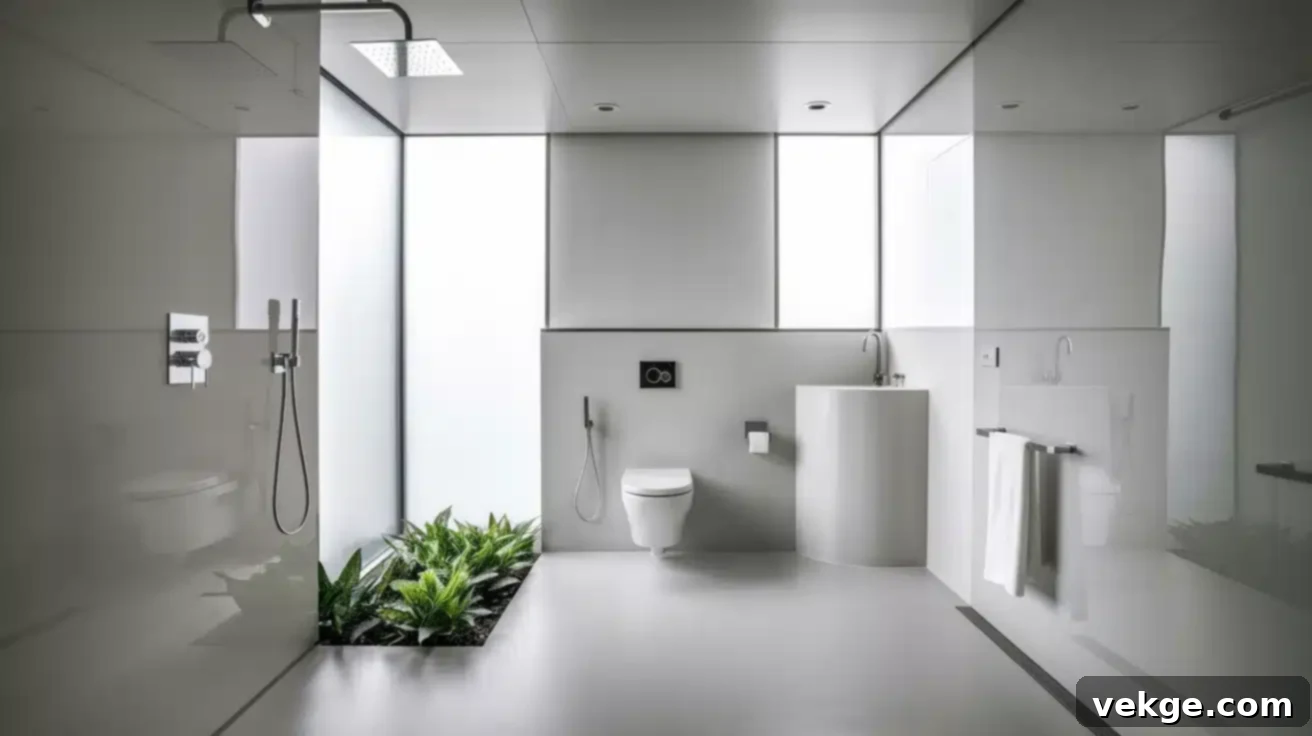
Bathrooms, particularly smaller ones, often present unique space challenges that demand creative and ingenious solutions. Wall-mounted toilets and vanities are excellent choices, as they lift off the floor, creating the illusion of more open space and making cleaning easier. Corner sinks can maximize available area in compact powder rooms, providing essential functionality without overwhelming the space.
Modern fixture options abound, offering both luxury and efficiency. Consider rainfall shower heads for a luxurious experience, water-saving toilets that reduce consumption, and touchless faucets that enhance hygiene and convenience. For an added touch of comfort during colder months, heated flooring can be installed without claiming any additional space, providing a warm welcome on chilly mornings.
In terms of design, opt for light colors and large format tiles to make the space feel larger and more cohesive. Incorporate smart storage solutions like recessed medicine cabinets, built-in shower niches, and vanity drawers to keep clutter at bay. Proper ventilation is also crucial to prevent moisture buildup and maintain air quality, while dimmable lighting can create different moods, from bright and functional to relaxing and ambient.
Living Room Remodeling Ideas
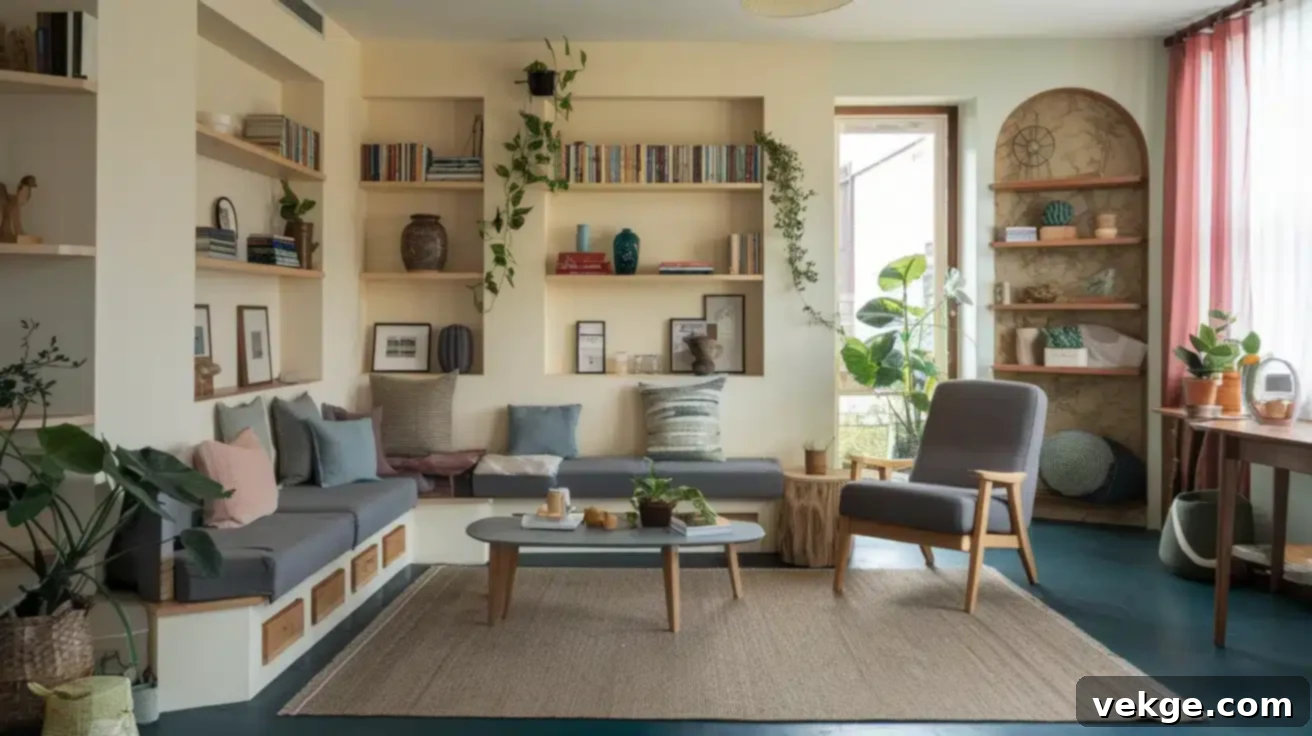
Living rooms are increasingly required to accommodate multiple functions, evolving from simple entertainment hubs to versatile spaces for work, relaxation, and social gatherings. Flexible furniture arrangements are key to allowing these spaces to seamlessly transition between various uses throughout the day. Consider modular seating that can be reconfigured based on immediate needs, or ottomans that cleverly serve as both extra seating and practical coffee tables with hidden storage.
Built-in storage solutions are invaluable for managing clutter without sacrificing style or valuable floor space. Custom bookcases, integrated entertainment centers, and window seats with hidden compartments can all contribute to a more organized and aesthetically pleasing environment. These elements not only provide practical storage but also add architectural interest and a sense of permanence to the room.
Beyond furniture and storage, think about creating distinct zones within the living room using area rugs, different lighting schemes, or even subtle changes in wall color. An inviting fireplace can serve as a focal point, while art and carefully chosen decor items can personalize the space. Optimal lighting, incorporating a mix of ambient, task, and accent lighting, can transform the mood and highlight different features of your newly designed living area.
Sustainability in Home Remodeling
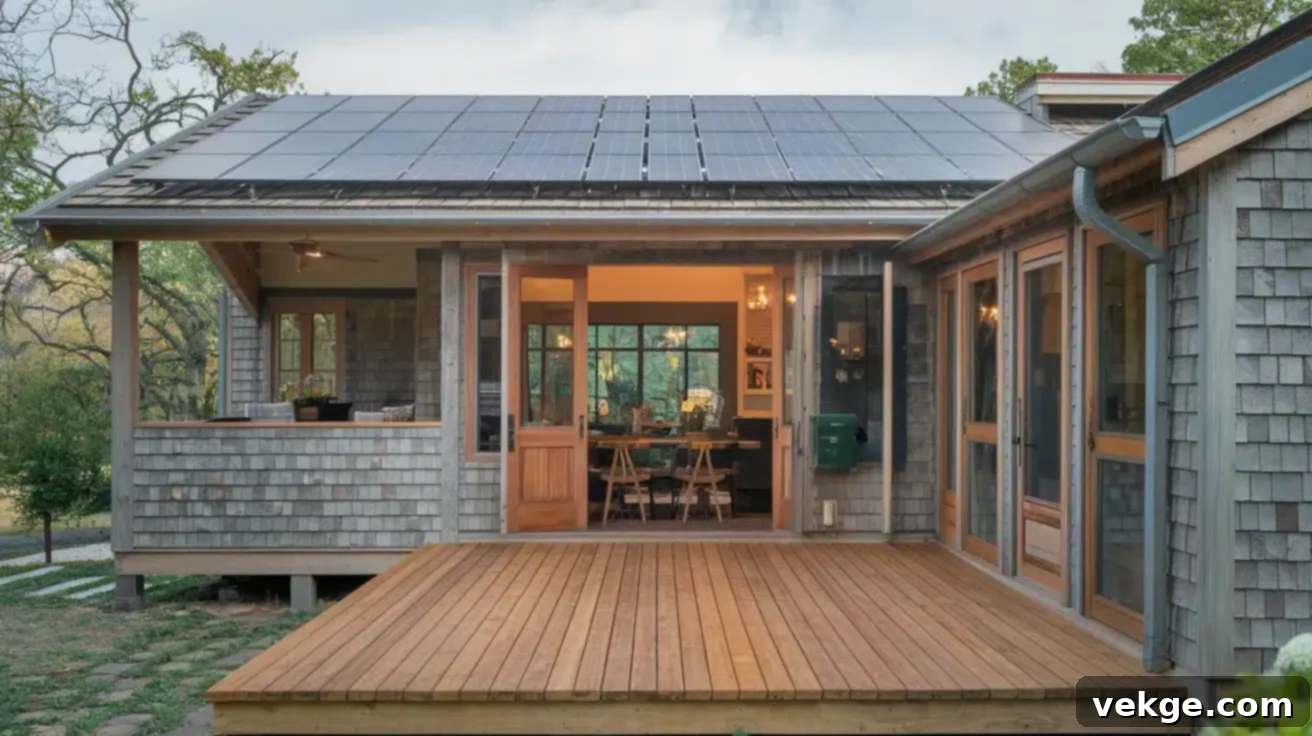
Incorporating environmental considerations into your home renovation not only creates spaces that are beautiful and highly functional but also ensures they are responsible and contribute positively to the planet. Sustainable remodeling approaches offer substantial benefits, positively impacting both your household budget through reduced operational costs and the environment by minimizing resource depletion and waste.
Eco-Friendly Options for Your Renovation
Choosing sustainable materials offers both impressive durability and a reduced environmental footprint. For flooring, consider rapidly renewable options like bamboo or cork, which grow significantly faster than traditional hardwood trees, making them a more eco-conscious choice. Recycled glass countertops and reclaimed wood, salvaged from old buildings, bring distinctive character and a rich history to your home while diverting waste from landfills.
Furthermore, selecting low-VOC (Volatile Organic Compound) paints and finishes dramatically improves indoor air quality by releasing fewer harmful chemicals into your home environment. Look for materials certified by organizations like the Forest Stewardship Council (FSC) for wood products, or those with EPDs (Environmental Product Declarations) for transparency regarding their environmental impact. These choices contribute to a healthier living space for your family and a healthier planet.
Maximizing Energy Efficiency
Improving your home’s energy performance through remodeling delivers ongoing financial returns, primarily through significantly reduced utility bills. Upgrading insulation in walls, attics, and basements effectively prevents heat transfer, keeping your home warmer in winter and cooler in summer. Installing energy-efficient windows, such as double or triple-pane glass, further reduces drafts and heat loss, while blocking harmful UV rays.
Replacing older appliances with ENERGY STAR certified models and switching to LED lighting consumes significantly less electricity, contributing to substantial energy savings. Integrating smart home technologies like programmable thermostats and smart lighting systems helps optimize energy usage patterns, allowing you to control and monitor energy consumption remotely and adapt to your lifestyle.
Consider also upgrading your HVAC system to a high-efficiency model, or exploring alternative energy sources like solar panels, which can further reduce your carbon footprint and potentially generate clean electricity for your home.
Effective Waste Reduction Strategies
Construction and demolition waste constitute a substantial portion of materials ending up in landfills. Minimizing this impact is a crucial aspect of sustainable remodeling. Start by salvaging usable items like fixtures, doors, or lumber for reuse within your project or donation to local architectural salvage yards. Implement a system to separate recyclable components, such as metals, plastics, and clean wood, from general waste during demolition.
Working with contractors who prioritize construction waste management can greatly enhance your efforts. Many professional contractors are equipped to identify additional opportunities to reduce environmental impact throughout your project, including partnering with recycling facilities or deconstruction services. Planning ahead for waste management can significantly reduce landfill contributions and ensure a more responsible renovation.
Final Touches to Complete Your Remodel
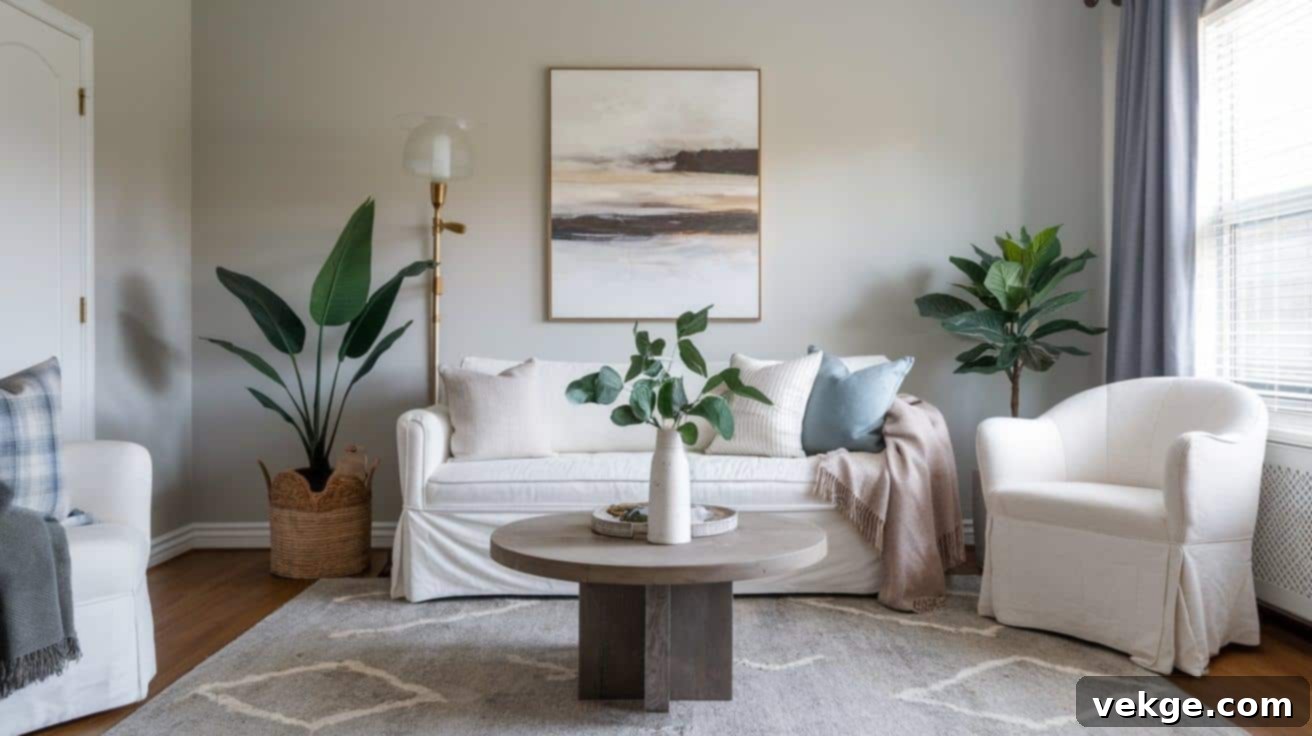
The construction phase, while significant, represents only one part of the entire home remodeling process. These crucial finishing steps are what truly transform your newly renovated space into a cohesive, functional, and inviting home, reflecting your vision and bringing all elements together beautifully.
Thoughtful Furnishing and Styling
Selecting furniture that complements your new space in both scale and style is essential for creating a harmonious environment. Carefully measure rooms to ensure that pieces fit properly, allowing for comfortable movement and avoiding crowded walkways or doorways. Choose a cohesive color palette that flows throughout the home, creating a sense of unity, while strategically adding accent colors to provide visual interest and depth.
Incorporate textiles such as rugs, curtains, and throw pillows to soften the space, add texture, and significantly improve acoustics, making rooms feel warmer and more inviting. Layering lighting, from ambient overhead fixtures to task lighting and decorative lamps, can create various moods and highlight architectural features or artwork. Finally, accessorize with art, plants, and decorative objects that reflect your personality and complete the desired aesthetic.
Post-Construction Cleaning and Organization
Upon completion of construction, schedule a thorough post-construction cleaning to meticulously remove dust, debris, and any residue from all surfaces. This includes often-overlooked areas like light fixtures, baseboards, window sills, and the interiors of new cabinets. Consider hiring a professional cleaning service specializing in post-construction clean-ups for the best results.
Once clean, install practical and intuitive storage solutions that are tailored to how you plan to use each space. Create designated places for frequently used items to maintain order and prevent clutter from accumulating long-term. Effective organization not only enhances functionality but also helps preserve the pristine look of your newly remodeled home.
Celebrate and Maintain Your Space
After all the hard work, take the time to celebrate the completion of your project. Host a small gathering to share your beautiful new space with friends and family, marking this significant milestone. Don’t forget to take “after” photos to document the stunning transformation and appreciate the extensive changes you’ve made to your home.
Establish simple, regular maintenance routines to protect your investment and keep your remodeled space looking its best for years to come. This includes routine cleaning, checking fixtures, and addressing minor issues before they become larger problems. Enjoy the comfort, beauty, and functionality of your refreshed home!
Common Pitfalls to Avoid During Home Remodeling

While home remodeling promises exciting transformations, many homeowners encounter similar challenges and setbacks during their renovation projects. Being aware of these common mistakes is your first line of defense, helping you to proactively avoid costly errors, frustrating delays, and unnecessary stress.
Proceeding without a comprehensive and detailed budget is among the most frequent and significant errors. This often leads to severe financial strain midway through projects, resulting in compromised quality of materials, unfinished work, or the need to take on additional debt. A well-structured budget must meticulously account for all anticipated costs, including materials, labor, design fees, permits, and critically, a robust contingency fund for unforeseen expenses.
Poor communication with contractors or the renovation team can create numerous problems. Miscommunications regarding expectations, project timelines, material specifications, or design details often lead to unsatisfactory results, rework, and significant strain on the client-contractor relationship. Regular, clear, and documented conversations with your renovation team are absolutely essential to keep everyone aligned.
Selecting highly fashionable or overly trendy designs without adequately considering their longevity can also be problematic. While current trends might look appealing now, they can quickly become dated, potentially affecting your home’s resale value in the future and requiring additional renovations sooner than necessary. Striking a balance between modern aesthetics and timeless appeal is key.
Additional common mistakes include underestimating project timelines, which can disrupt your life for longer than anticipated; skipping essential permit processes, leading to legal issues and potential fines; making too many significant changes mid-project, known as “scope creep,” which invariably increases costs and delays; and failing to consider how renovations in one area might affect adjacent spaces or existing home systems (e.g., plumbing, electrical, HVAC).
Another pitfall is underestimating the complexity of DIY tasks. While some small projects can be handled by homeowners, many renovations require specialized skills and tools. Attempting complex tasks without adequate experience can lead to poor quality work, safety hazards, and ultimately, more expensive professional repairs.
How to Avoid These Pitfalls for a Smooth Renovation
To ensure a smoother, more successful renovation, proactive planning and clear communication are paramount. Begin by creating a detailed project plan with specific, measurable goals before any work commences. Document your expectations, design preferences, and material choices in writing, sharing them with all involved parties—from designers to contractors—and requiring their acknowledgement.
When discussing design concepts, always include visual references like mood boards, photos, and architectural drawings to minimize misinterpretations. Plan your renovations as part of your home’s overall design scheme rather than isolated projects. This holistic approach ensures continuity and prevents one updated room from clashing with the rest of your home. Consider both your current needs and future possibilities when making significant changes to your living space, aiming for flexibility and enduring style.
Establish a clear communication protocol with your contractors from the outset. This should include regular update meetings (e.g., weekly check-ins), a designated point person for all questions, and a preferred method of communication (email for documentation, phone for urgent matters). Document all project changes, no matter how minor, in writing—ideally as change orders signed by both parties—and maintain organized records of all expenses, invoices, and modifications. This meticulous approach provides a clear paper trail, essential for resolving any disputes and staying within budget and timeline. Finally, be realistic about timelines and budget, and always prioritize quality and safety over cutting corners.
Conclusion
Ready to truly transform your living space into the home of your dreams? The path to a great home remodel begins with solid groundwork and informed decisions. Take everything you’ve learned within this guide and put it into action: sketch out those initial ideas, meticulously crunch the numbers for your budget, and deeply reflect on what you genuinely wish to change and achieve in your home.
Remember that diligent research and thorough preparation are your best allies, saving you countless headaches, unexpected costs, and frustrations later in the process. Talk to friends, family, or neighbors who have successfully navigated similar projects to glean their insights and recommendations. Diligently investigate local building requirements and necessary permits to ensure full compliance. Most importantly, take your time in finding the right professionals—skilled designers, reputable contractors, and reliable tradespeople—whose expertise and vision align with yours.
Your home remodel should ultimately enhance your daily life, making your space more functional, comfortable, and beautiful, not just different. It’s about creating an environment that supports your lifestyle and brings you joy every day. Embrace the process, stay organized, and look forward to enjoying your transformed home.
Want more ideas or professional guidance tailored to your specific project? Explore our other articles for deeper insights, or reach out to local remodeling experts to discuss your vision and get started on making your dream home a reality!
Frequently Asked Questions
How can I ensure my remodel adds significant value to my home?
To ensure your remodel adds significant value, focus on universal appeal and functional improvements. Choose quality, durable finishes that boost aesthetic appeal while selecting neutral colors and timeless designs that will attract a broader range of potential home buyers. Prioritize practical improvements in key areas like kitchens and bathrooms, as these often yield the highest return on investment. Energy-efficient upgrades and smart home technology also contribute positively to overall home value.
How long does a typical home remodel take?
The duration of a typical remodel varies greatly depending on its scope and complexity. Single-room renovations, such as a bathroom or a small kitchen, typically last between 4 to 12 weeks. More extensive and complex projects, like a full home renovation or multiple room updates, might extend to 3 to 6 months or even longer. This timeframe accounts for all phases: initial design, obtaining permits, demolition, construction, finishing touches, unexpected challenges, and intricate work that requires specialized attention for a complete transformation.
Should I remodel one room at a time or tackle multiple rooms simultaneously?
The decision to remodel one room at a time or multiple rooms concurrently depends on several factors, primarily your financial resources, tolerance for disruption, and the overall scope of your vision. Remodeling multiple rooms simultaneously can often streamline processes, potentially reduce overall labor costs by having contractors on-site for longer, and allow for a more cohesive design across your home. However, it also demands a larger upfront budget and can be more disruptive to your daily life. Remodeling one room at a time, while potentially taking longer overall, allows for better budget management, reduces immediate disruption, and offers a phased approach to home improvement.
